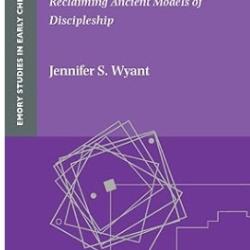By the Act Prohibiting the Importation of Slaves, the US Congress decided that no more slaves were to be imported to the United States. The law passed in 1807 and went into effect in 1808.
The slave trade to the Americas did not end. As Stephen Chambers notes in his No God But Gain, “Fully 25 percent (3.2 million) of all the enslaved Africans to arrive in the Americas were brought after the U.S. ban. Just as significantly, more than 85 percent (759,669) of slaves brought to Cuba and 40 percent (2.2 million) of those brought to Brazil arrived after 1807” (10). These slaves were not being brought into the US, but they were crossing the Atlantic to work sugar plantations in Cuba and to supply labor for other agro-businesses in South America. The British Navy worked hard to suppress the trade, but according to Chambers the US did not join them. Chambers’ book attempts to explain why.
The nub of his argument is that the US depended too heavily on the produce of the slave economies to their South to try to intercept the trade.:‘‘For decades after the U.S. ban, sugar and gold flowed north in their ships because of a steady influx of illegally transported enslaved Africans to replace the dead in the agro-industrial graveyards of the Caribbean and South America. In these years, this was the central driver of the rise of U.S. finance, market integration, and globalization. If coffee, sugar and specie unlocked the doors of European and Asian markets for U.S. capitalists, slave ships were their key” (11).
And from here Chambers suggests that the Monroe Doctrine was issued to protect this hemispheric economy based on the slave trade. The main target of Monroe’s warning about European intervention was Britain, and the main reason he wanted to keep Britain out of the Western hemisphere was because Britain would have interfered with the system. In 1823, Monroe wrote that Cuba had to resist “any attempt to get possession of the Island by England” (quoted 122). Chambers puts it bluntly: “The Monroe Doctrine was created to protect the illegal slave trade and the slave regimes it created” (12).
I don’t know the period well enough to know how plausible it is, but Chambers seems vulnerable at one point. In the nature of the case, he discovers no smoking gun, no secret Presidential paper that lays out the plot to maintain the slave trade. No fault there, but it does mean that Chambers’s case relies on circumstantial evidence, putting pieces together. But that means that less damning constructions are possible. Still in all, Chambers offers an arresting theory worthy of serious engagement.













